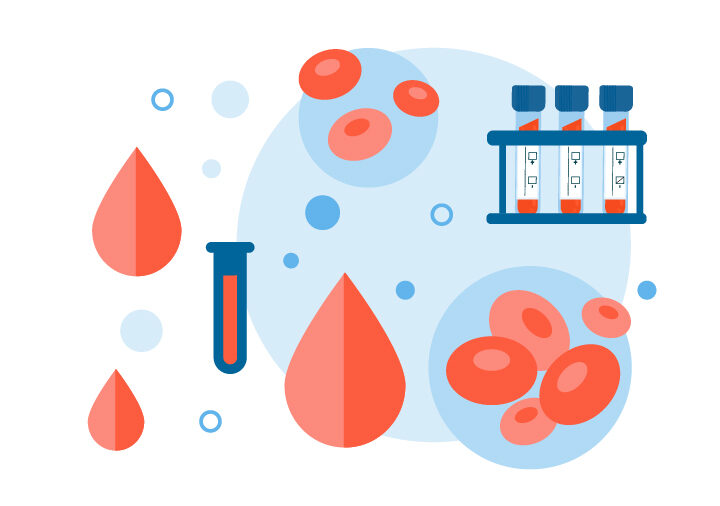
Your cart is currently empty.

Anemia is a general term used to describe a decrease in the number of red blood cells or hemoglobin. The number of people suffering from anemia is staggering, with over two billion people affected globally, including an estimated three million in the U.S. While anyone is at risk of developing anemia, it’s especially common in women and children, due in part to their higher iron needs.
In this blog, we’ll describe the three most commonly diagnosed types of anemia, their causes and symptoms, as well as how you can be easily and quickly tested for the disorder.
Microcytic anemia is a type of anemia characterized by abnormally small red blood cells. Due to their decreased size, the cells are unable to sufficiently carry oxygen to the body’s tissues and organs. Common symptoms include fatigue, weakness, shortness of breath, pale skin, and tiredness.
The most common type of microcytic anemia is hypochromic, where your body carries decreased amounts of red blood cells. Microcytic anemia can be caused by the following:
Hyperchromic anemia is the opposite, where your red blood cells have an excess amount of hemoglobin. This rare condition is caused by a genetic disorder called congenital spherocytic anemia. In this condition, the cells are abnormally shaped and cannot travel in the blood cells. As a result, they are broken down and destroyed in the spleen.
In normocytic anemia, red blood cells are normal-sized, but there are fewer of them. The decreased hemoglobin results in less oxygen that can be delivered to vital parts of the body. Normocytic anemia has a gradual onset with minor symptoms. However, over time, increased paleness, fatigue, and episodes of dizziness and weakness may arise.
Common causes of normocytic anemia include the following:
Macrocytic anemia is characterized by abnormally large red blood cells that lack the required nutrients for normal functioning. The most common forms of macrocytic anemia are megaloblastic and non-megaloblastic.
While megaloblastic macrocytic anemia can result from a vitamin B-12 and/or B6 deficiency, non-megaloblastic is caused by any of the following:
If you’re concerned that you or a family member are experiencing symptoms of anemia, don’t attempt to self-treat the condition with excessive doses of iron supplements as this can cause iron toxicity complications. Contact your physician for further evaluation, especially as anemia may be a sign of an underlying condition.
If you’re unable to see your physician right away, home lab testing can help by providing you with early results that are confidential, convenient, and fast. Additionally, your test results will enable you to be better prepared to discuss your condition with your physician.
If you have any of the above symptoms of anemia, don’t wait – get tested today. Priority Lab Testing offers an anemia panel that measures your red blood cell count and helps identify any signs of the condition. With Priority Lab Testing, you can rest assured that you’re getting accurate, reliable results from a trusted source. Plus, our panels are priced affordably so that everyone can get the care they need.